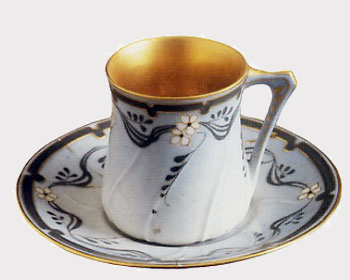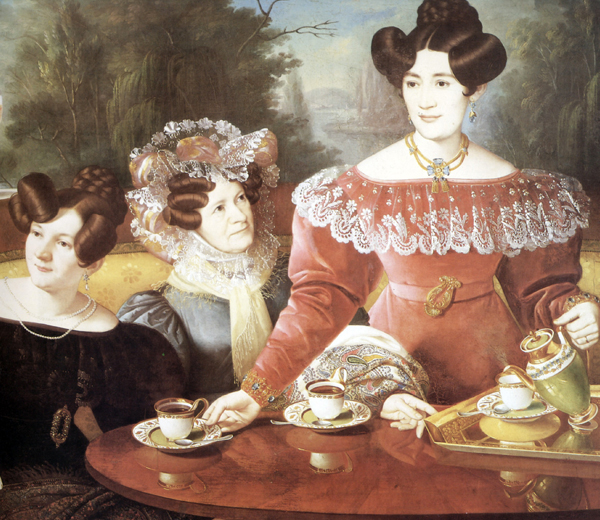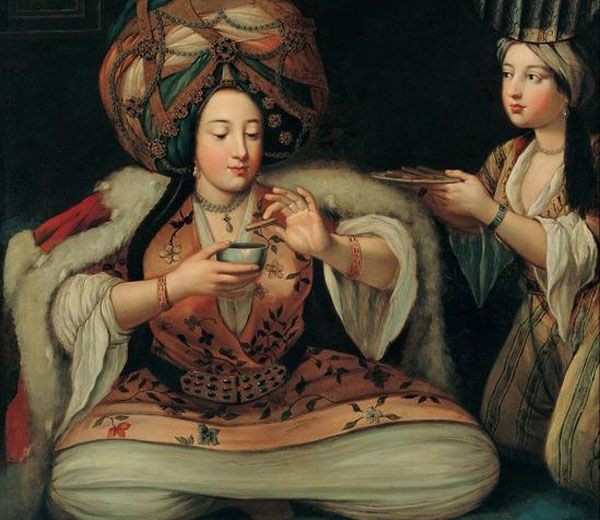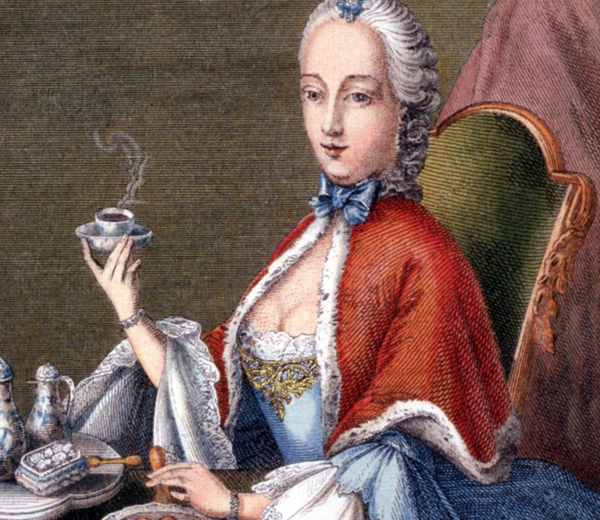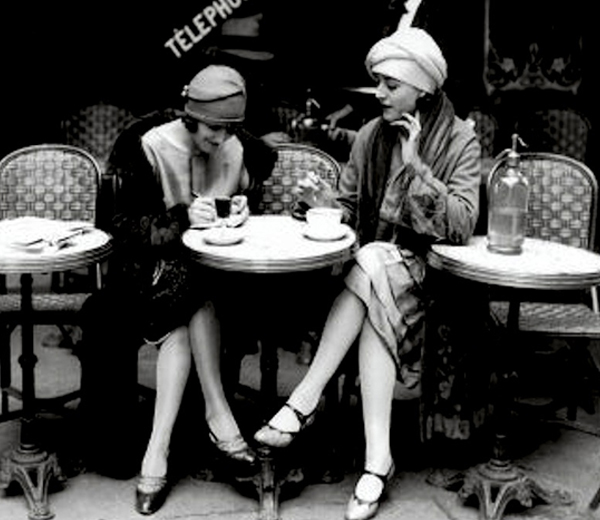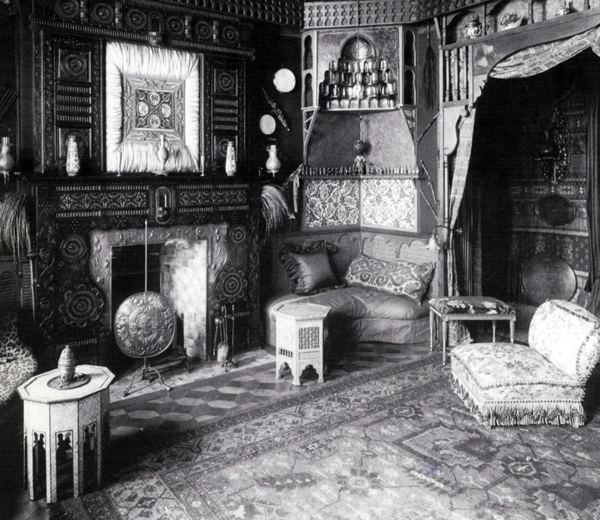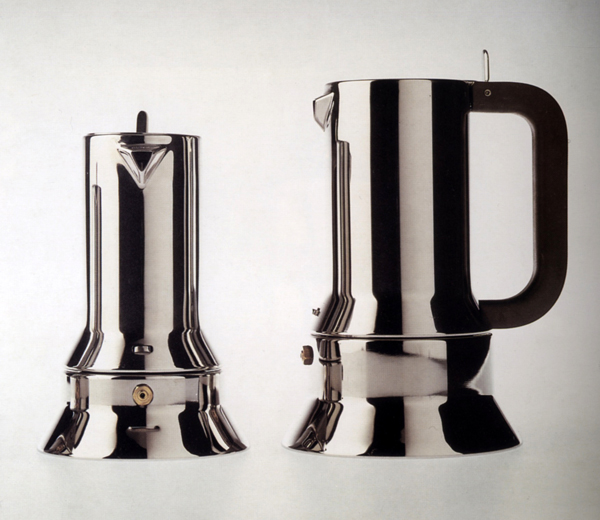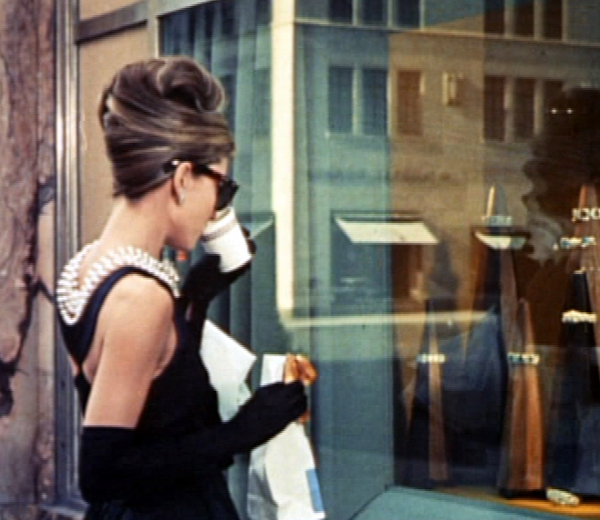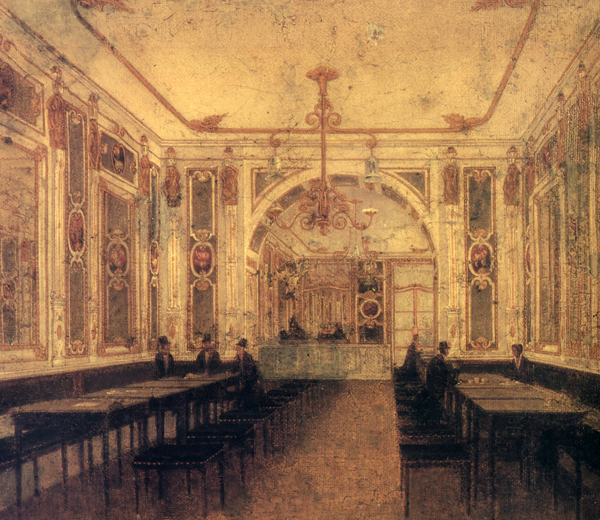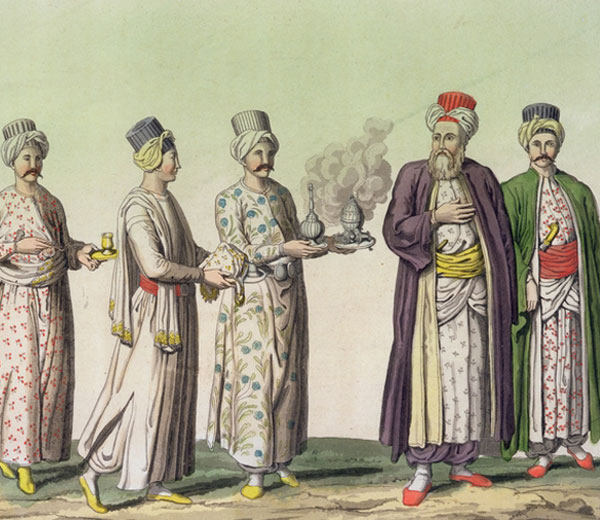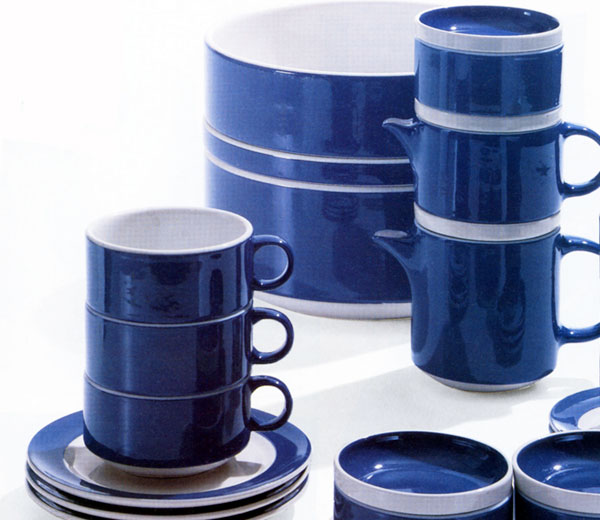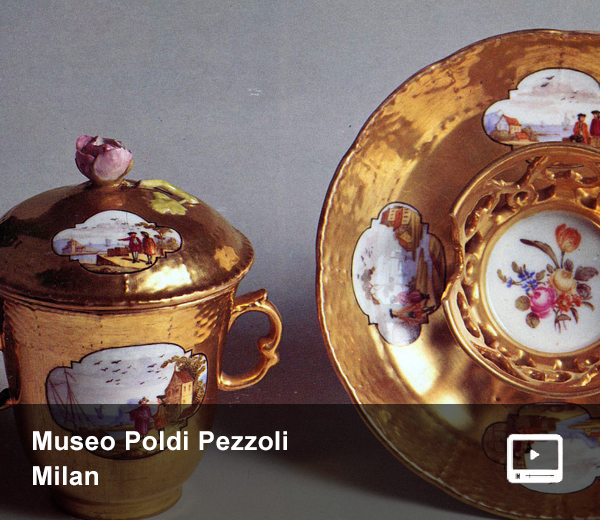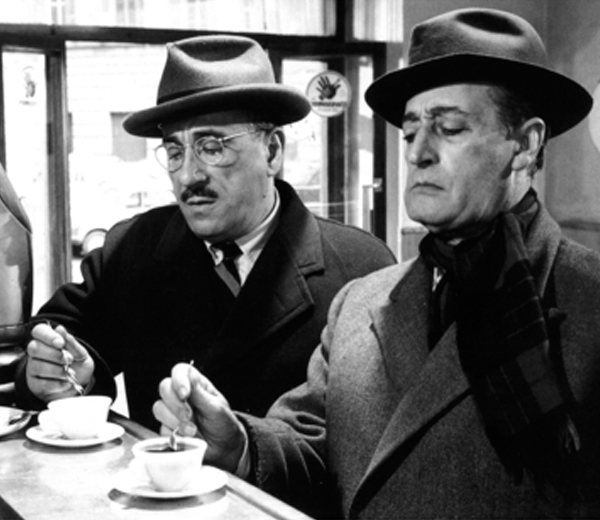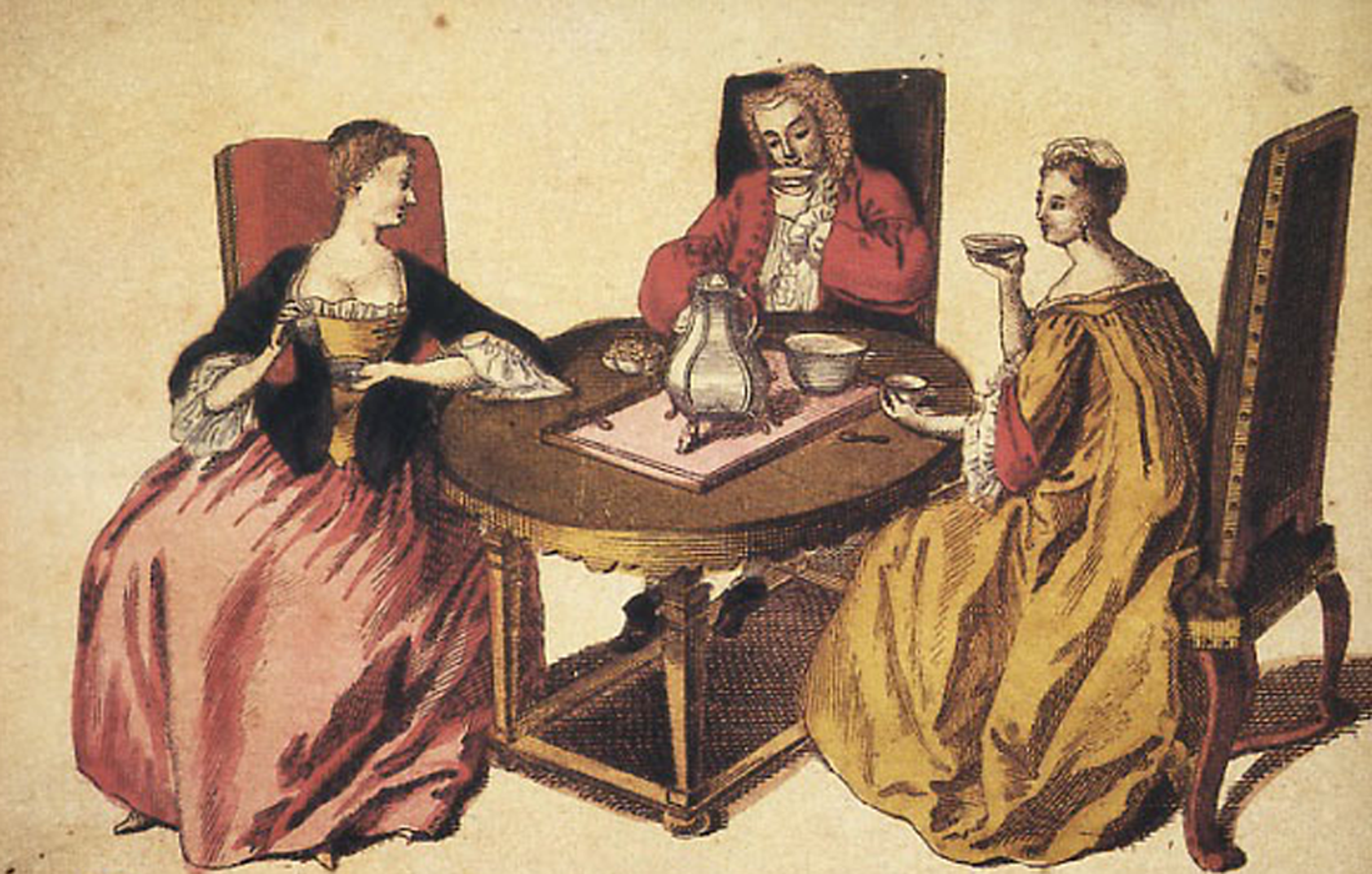
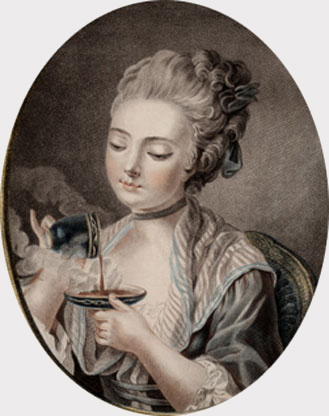
Louis-Marin Bonnet, Woman Taking Coffee, 1774
Richard-Ginori, Coffee cup and saucer, c. 1900–1910. Sesto Fiorentino, Museo Richard-Ginori at the Doccia factory
Top: Ladies and a Gentleman Sipping Coffee from a Saucer, 18th century
Bottom: Emilio Rizzi, The Golden Cup, 1911. Private collection
THE COFFEE CUP. THE DAILY COFFEE RITUAL
Having arrived in Europe via Istanbul in the 17th century, coffee was initially served according to an eastern-style ritual. The most sophisticated way of serving it involved the use of handleless coffee cups in Chinese porcelain, identical to those used for tea. To make serving more elegant and convenient, the cups were accompanied by saucers, also used as “coolers”: the coffee was cooled by pouring it into the saucer and sipped from the latter. This custom, which was widespread in the 18th century, was later frowned upon as bad manners. However, the custom of accompanying the cups and saucers with a coffee maker, milk jug, sugar bowl, coffee spoons and a tray has continued over time.
